The Mall Effect
The new mega shopping mall marks the shift of the region’s commercial and population centers from the coastline to I-75.
By Cooper Levey-Baker
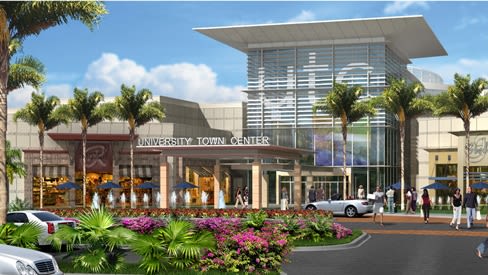
Glancing through the history books, you can see specific turning points that birthed the Sarasota we know today: the land grab of the ’20s, the decision to reroute U.S. 41 along the bayfront in the ’50s, the opening of Sarasota Square mall in the ’70s, I-75’s construction in the ’80s, the birth of Lakewood Ranch in the ’90s and last decade’s high-rise condo boom that transformed Sarasota’s downtown.
We’re now going through another pivotal transformation. We are witnessing a shift of the center of Sarasota from downtown Sarasota and surrounding coastal neighborhoods eastward to the I-75 and University Parkway area, symbolized in a decisive way with the construction of The Mall at University Town Center.
The upscale mall, set to open in October, positions the region as one with growing affluence, and is likely to spur even more development of housing, offices, retail and tourism in an area that only 20 years ago was cow pasture.
LOCATION, LOCATION, LOCATION
Sarasota-based Benderson Development, one of the country’s largest privately held developers with properties in 38 states, first came to University Parkway and I-75 in 1998, when the company purchased the old Sarasota Outlet Center on the north side of University, just west of the interstate. The mall was “physically deplorable,” says Mark Chait, executive director of leasing for the Southeast. It also happened to be 80 percent empty. But company founder Nathan Benderson knew a good location when he saw one: adjacent to the highway, on the border between Manatee and Sarasota, close to where the first homes in Lakewood Ranch were starting to pop up.
An important Benderson principle is that when the company identifies a “strong area,” it builds a number of projects in that spot. In the years after acquiring the outlet mall and upgrading it into the Shoppes at University Center, the company developed three other shopping centers along the north side of University Parkway.
University Town Center will be the first new mall to open in Sarasota in 40 years and only one of two indoor malls being built right now in the continental U.S. Most mall developers today are reinvesting and upgrading their properties, not building from the ground up, says Jesse Tron of ICSC (International Council of Shopping Centers). So what convinced Benderson and co-developer Michigan-based Taubman that a $315 million, 880,000-square-foot super mall was viable?
A GROWING MARKET
Octavio Ortiz, UTC’s general manager, says Taubman, which is handling leasing for the project, looked at metrics like retail spending per capita and viewed the local market as “underserved,” especially in more upscale retail and fashion. And the company’s research convinced them that the region’s economy was on an upswing and that the number of affluent households was going to grow. They also liked Sarasota’s “significant” influx of tourists and seasonal residents who wanted better shopping options. Contributing to the confidence are the new adjacent international rowing park, expected to bring in tens of thousands of visitors annually, and Benderson’s plans for at least two new hotels, 220,000 square feet of office space and more homes.
WEAK MALL COMPETITION
Benderson’s Chait adds, “When you look around the greater Sarasota-Manatee area, what you simply don’t have is a great mall.” He points to struggling DeSoto Square in Bradenton and Sarasota’s two Westfield-owned proper-ties—Southgate and Sarasota Square—which, he says, haven’t been meeting demand. Tampa’s International Plaza (another Taubman property), which opened in 2001, has long drawn Sarasota and Manatee shoppers looking for high-end goods from Neiman Marcus, Louis Vuitton, Apple and more.
University Town Center will offer some of those same names, including Apple, as well as international brands like Armani, H&M, Urban Outfitters and more. Anchored by Macy’s, Dillard’s and Saks Fifth Avenue, the mall will draw on an enormous potential customer base. The trade area includes 1.2 million people. Taubman says the mall will “fill the void between Tampa and Naples,” particularly for upper-class Sarasota and Manatee shoppers, but will also draw from as far south as Fort Myers and as far north as St. Pete.
Taubman’s goal is to have at least 50 percent of University Town Center’s stores new to the area. And while mall tenants Saks, Macy’s and Dillard’s have long called Sarasota home, their new stores will be unlike their other locations. Saks, for example, is doubling its size when it opens in University Town Center.
The economic impact will be tremendous, says Rex Jensen, president and CEO of Lakewood Ranch developer Schroeder-Manatee Ranch. The mall means much more than just a bunch of new shops. “The epicenter of commerce is shifting to the I-75 corridor,” he says. Employment (1,000 construction jobs and 2,000 permanent mall jobs), home sales—Jensen says it’s all headed eastward, something he’s been predicting for decades: “I-75 is the area’s new Main Street.”
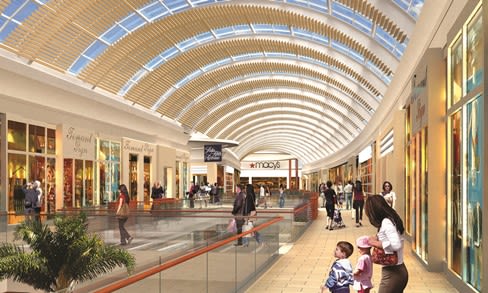
HERE COME THE HOMES
Lakewood Ranch has brought thousands of homes to the area east of I-75 and thousands more are planned. Benderson plans to build 1,750 residential units near the mall, right across the interstate from The Villages of Lakewood Ranch. The Villages, Schroeder-Manatee Ranch’s development, has already been granted approval for 5,144 new units under Sarasota County’s 2050 land-use plan, approved a decade ago to discourage sprawl and encourage the construction of walkable, mixed-use neighborhoods. In February, the Sarasota County Commission accepted a consultant’s recommendations to revise the 2050 plan, making it easier for developers to build residential neighborhoods east of I-75.
Pat Neal of Neal Communities, who has built thousands of homes in Lakewood Ranch, has surveyed every sin-gle vacant property south of Fruitville and west of I-75 for new homebuilding opportunities. He says there’s very little space left for residential development west of I-75. He predicts the new mall will be a major “attractor” for the region, all part of a very broad, very real regional shift.
A NEW RETAIL LANDSCAPE
The mall’s immediate impact will be on its fellow retailers.
“Southgate will definitely feel the pressure of the new mall,” says Brett Hutchens, a partner with Casto, which worked with Schroeder-Manatee to build Lakewood Ranch’s Main Street and also developed the downtown Whole Foods. Saks is leaving Southgate, and some worry that other stores may bolt as well. Since Saks’ decision, Westfield Southgate has already begun to upgrade its appearance and has plans to expand with a new one-acre street-style outdoor shopping and dining area, and perhaps even an upscale, dine-in movie theater. Rather than just a collection of shops, the mall could become an evening entertainment destination. It will even have a new name: Westfield Siesta Key.
Hutchens says that for all its growth, Sarasota still isn’t big enough to support multiple locations of the same retailer. He predicts Southgate “will lose a lot of its current tenants.” But eventually, he thinks, with its killer midtown location, the mall will find new lessees.
LAKEWOOD RANCH SHOPPING
Out at Main Street in Lakewood Ranch, meanwhile, some business owners are anxious about the new competition. Manatee County Commissioner Vanessa Baugh, who represents the district just north of the new mall and whose business, Vanessa Fine Jewelry, moved to Main Street in 2005, says residents might initially be drawn to check out the new mall, but they won’t forget about “the relationships they’ve built” with local businesses.
But that doesn’t mean businesses can rest easy. Main Street shops each have a niche, and they need to figure out how to exploit it. Her store, for example, does a lot of custom jewelry work, something she says most chains don’t offer. It’s up to business owners to be creative in how they market themselves. “We’re entrepreneurs,” she says. “We know we have to change.”
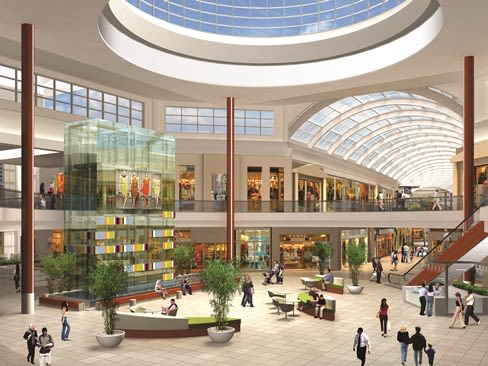
DOWNTOWN RETAIL
Downtown Sarasota merchants are concerned, admits downtown economic development coordinator Norm Gollub. The city is battling a handful of disadvantages when it comes to attracting shoppers: Residential density isn’t high enough to entice major chains, the homeless population offers a negative first impression, parking issues continue, and many stores don’t stay open into the evening.
Despite these challenges, Gollub says, downtown has an unbeatable location near Sarasota Bay; its sidewalks are busy day and night with pedestrians, shoppers, workers and diners; more than 80 restaurants are open, many with outdoor seating; and Gollub is working with property owners to have them include operating hour stipulations in their leases to make sure stores are capitalizing on after-dinner window shopping.
WINDOWS OF OPPORTUNITY
The downtown residential picture may be shifting, too. The city is considering a zoning overlay for nearby Rosemary District to encourage residential redevelopment. New construction there could be denser than it is currently zoned, at 25 units per acre, as long as the buildings still conform to established design standards. No building could be higher than five stories, for example.
“You have to increase the 24/7 population in downtown Sarasota,” says commercial realtor Ian Black. “You need bodies in the streets.” He calls the Rosemary proposal one of the most important projects he’s seen in 20 years.
But the city needs to act quickly, he insists. It needs to put its best face forward in 2017, when the World Rowing Championships come to Nathan Benderson Park, now under construction just to the south of University Town Center. More than $30 million in taxpayer funds have been allocated for the project, which is being managed by a nonprofit headed by Paul Blackketter, executive director of planning for Benderson. The park should be on track to host more than 80 annual events by 2020, with an estimated annual economic impact of $56 million, according to Blackketter’s business plan. Tens of thousands of visitors are expected as part of the 2017 championships. While the new mall, adjacent hotels, restaurants and shops will benefit directly, some of those new visitors will venture downtown. “We’ll get one chance at them,” Black says, who believes in a rising-tide-lifts-all-boats philosophy. He calls the new mall “terrific” for Sarasota.
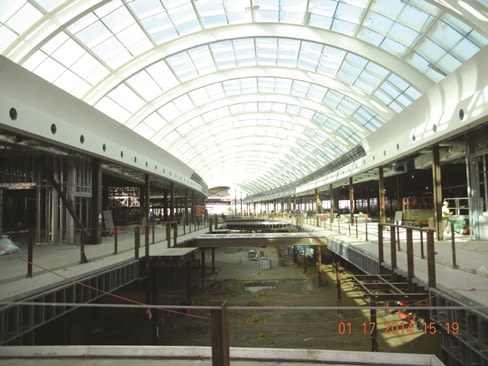
TRAFFIC WOES
Asked what he thinks the new mall will bring to Sarasota, land use attorney and growth critic Dan Lobeck is quick to answer: “Intolerable gridlock.” The intersection of I-75 and University Parkway is already a traffic nightmare, others agree, and new shoppers will further congest roadways, particularly when you factor in the possibility of large new residential developments east of I-75.
Lobeck has been an acidic critic of the commission’s decision to revisit Sarasota 2050. He says the board is not interested in funding its road program to meet the new demands of the mall and the nearby Nathan Benderson Rowing Park. The commission reduced its road impact fees in 2007 and then halved that rate in 2011. “There’s no thought at all being given to the traffic impacts of their developments,” Lobeck says.
Even with the mall unfinished, 57,000 vehicles enter I-75 from University Parkway each day, and another 28,000 get off. Planners say those numbers could increase by 20 percent by 2018.
POSSIBLE ROAD SOLUTIONS
To combat the increase, the Florida Department of Transportation may fast track a 10-lane diverging diamond intersection, which would allow those getting on or off the freeway to do so without hitting a light. With a possible construction start before 2017, it would be the first of its kind in Florida.
But that won’t solve the larger problem. According to Rod Warner, a member of the Sarasota/Manatee Metropolitan Planning Organization’s Citizen Advisory Committee, the main reason for the gridlock on I-75 is that locals are hopping on and off the Interstate, particularly between University and Fruitville. Those quick trips clog up a highway intended to serve commuters.
Sarasota County engineer Jim Harriott says many road improvements have already been made as part of the approval of Benderson’s plans. Those include the expansion of I-75 on- and off-ramps, as well as the extension of Cattlemen Road from University to Fruitville and new roundabouts on Honore, both of which present north-south drivers with options besides jumping on the freeway. According to Harriott, the county is currently examining Benderson’s future projects to see what new roads may be required. One likely scenario involves an overpass that would span the highway then loop around to form an intersection with Cattlemen.
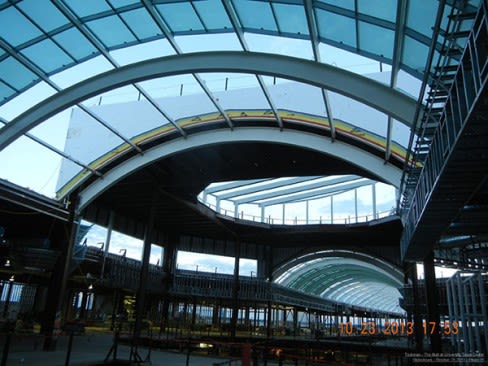
THE FUTURE
What will the area around University Parkway and I-75 look like in 10 years? Even for someone chest-deep in the process like Chait, it’s hard to say. Jensen says nothing on the table has altered his company’s plans for Lakewood Ranch, although he has hit pause on new retail development until he knows exactly which stores University Town Center will claim.
Hutchens has difficulty imagining where new commercial development might go after the mall comes online. Once University Town Center is open, Sarasota will be “well-served” by retail, he says.
For a while, the mall will pull shoppers from other retail centers in the area. But Tron, the ICSC spokesman, says while a brand-new regional mall initially attracts shoppers in droves, this shift only lasts about a year until the newness wears off. “Regional malls have a destination feel,” he says. Shoppers tend to view these supermalls as a special planned trip, but they don’t head there as often as they do their nearby stores.
But for many out-of-towners—shoppers, tourists, seasonal residents and all those new sports participants—the mall will be one of the first places they stop, and the region around the mall will attract new homebuyers and businesses. “The incomes have moved east,” Neal says, “thus the shopping and the jobs.”